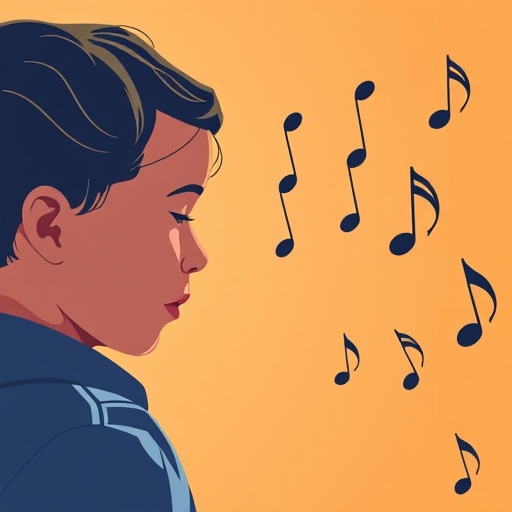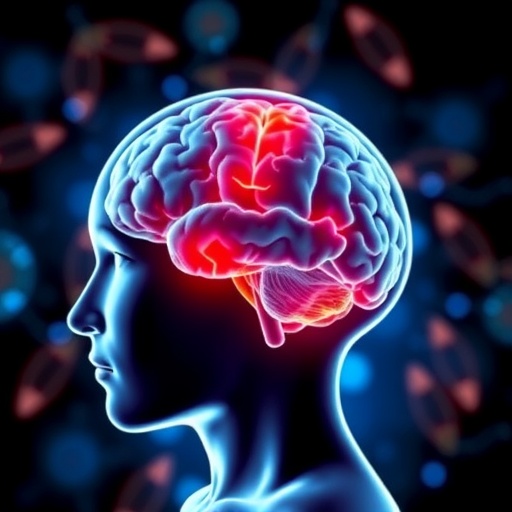In a groundbreaking study unveiled in 2025, researchers have uncovered compelling associations linking musical rhythm abilities with the risk of developmental speech-language problems and disorders. This interdisciplinary research, integrating the domains of neuroscience, genetics, and epidemiology, offers unprecedented insights into how our innate rhythmic skills might serve as early indicators of neurodevelopmental vulnerabilities. The study, published in Nature Communications, sheds light on the complex genetic architecture underlying both musical rhythm competencies and speech-language development, potentially revolutionizing how clinicians approach early diagnosis and intervention strategies.
The investigation employed a large-scale epidemiological design, analyzing data from tens of thousands of individuals to rigorously assess the relationship between rhythmic proficiency and language development outcomes. Researchers utilized advanced polygenic scoring techniques to quantify inherited genetic predispositions relevant to rhythm and speech-language attributes. Through this approach, they identified significant polygenic associations indicating that individuals with stronger rhythmic skills tend to possess a lower genetic risk for speech-language developmental disorders.
Fundamentally, the study addresses the mechanism by which human rhythm and speech might be interlinked at the genetic level. Previous anecdotal and behavioral research had hinted at this connection, but the present work is among the first to systematically trace it using molecular genetic data combined with large population cohorts. The researchers argue that rhythmic processing may share neurocognitive and genetic substrates with language acquisition and fluency, particularly in early childhood stages when neural circuits related to auditory processing and motor coordination are highly malleable.
Crucially, the data suggest that rhythm ability is not merely a byproduct of language skill but may act as a predictive phenotype — a measurable trait signaling underlying neurodevelopmental trajectories. This insight opens a promising avenue to employ rhythm-based tasks as cost-effective and non-invasive screening tools for early identification of children at risk of language delays or disorders such as developmental language disorder (DLD) or speech sound disorder (SSD). Early identification remains a persistent challenge in developmental pathology, and rhythm assessment could materially improve outcome prognostication.
The polygenic risk scoring methodology leveraged in this study aggregates the effects of thousands of genetic variants, each contributing a small amount to the overall risk profile. By overlaying these risk scores with rhythmic ability measurements, the researchers created a multifaceted model predicting developmental speech-language outcomes with more precision than traditional diagnostic approaches alone. This polygenic epidemiological framework exemplifies the next frontier in personalized medicine, where genetic data inform tailored screening and intervention modalities.
In addition to genetic factors, the study also accounted for environmental influences and socioeconomic variables, ensuring that the associations reflected genuine biological underpinnings rather than confounded correlations. This rigorous analytical control boosts confidence in the replicability and translational potential of the findings. Such holistic consideration affirms that rhythm ability and language development are interconnected phenomena influenced by a complex interplay of nature and nurture.
The neuroscientific implications of these findings cannot be overstated. Rhythm processing engages a distributed network of brain regions, including auditory cortex, basal ganglia, and motor areas. These circuits overlap substantially with those implicated in language processing, suggesting a shared neurobiological foundation. The study offers further evidence that early rhythmic training or musical engagement might stimulate plasticity within these networks, serving as a therapeutic adjunct to conventional language interventions.
While the study illuminates the predictive value of rhythm for developmental speech-language problems, it also provokes a suite of new research questions. For instance, can rhythmic skills be enhanced through early childhood education to mitigate genetic risks? What is the critical developmental window during which rhythm-based interventions would be most efficacious? How do cultural and linguistic diversity impact these genetic and phenotypic associations? These questions underscore the vast potential for future longitudinal and interventional studies building on the present findings.
Moreover, the exploration of polygenic risk related to rhythm and speech highlights the increasing sophistication of psychiatric and neurological genetic research. By moving beyond single-gene models toward polygenic aggregation, scientists can map complex traits and disorders with unprecedented granularity. This shift holds promise not only for speech-language pathology but for a wider spectrum of neurodevelopmental and psychiatric conditions where multifactorial genetics predominate.
Importantly, the public health ramifications of this research stretch beyond individual prognosis. Speech-language disorders impose significant societal burdens, including educational challenges, social integration difficulties, and economic costs. Early and objective identification using rhythm ability assessments, coupled with genetic risk profiling, could inform population-based screening programs, enabling targeted resource allocation and potentially reducing lifelong disability prevalence.
The research team employed a battery of rhythmic assessment tools ranging from simple beat synchronization tasks to more complex pattern recognition measures, ensuring robustness in their phenotypic characterization. Such methodological diversity strengthens the generalizability of their conclusions, as rhythm is a multifaceted cognitive construct encompassing timing, perception, and motor coordination. It also suggests that holistic rhythmic profiling could optimally capture the spectrum of relevant abilities linked to language development.
In the broader context of developmental neuroscience, these findings contribute to a growing understanding of how domain-general cognitive functions—such as temporal processing and sensory-motor integration—interact with domain-specific capabilities like speech and language. By elucidating the shared genetic underpinnings, the study paves the way for integrative models that synthesize these cognitive domains rather than treating them as isolated phenomena.
The implications for clinical practice are equally significant. Measuring rhythmic ability is often straightforward and engaging, making it a feasible addition to pediatric screening protocols. Coupled with genetic insights, this could transform the paradigm of early detection from reactive to proactive. Clinicians could identify children at risk before overt symptoms manifest, enabling early intervention that harnesses neural plasticity during critical periods.
Nevertheless, the authors caution against overinterpretation of the polygenic risk scores as deterministic predictors. Rather, these scores represent probabilistic risk estimates within a multifactorial landscape shaped by genes, environment, and experience. Thus, rhythm ability should be viewed as one piece of a larger puzzle in developmental speech-language diagnostics and treatment planning.
This research aligns with emerging trends toward precision health, where multi-dimensional data integration—including behavioral phenotypes, genome-wide data, and environmental measures—guides customized interventions. The integration of rhythm ability assessment into this framework exemplifies how seemingly simple cognitive traits can serve as windows into complex neurodevelopmental processes.
Future research trajectories might explore the cross-cultural applicability of these findings, ensuring that rhythmic assessments are valid and reliable across diverse linguistic and musical environments. Additionally, the role of bilingualism and multilingualism in modulating the link between rhythm and language deserves particular scrutiny, given the increasing global prevalence of multilingual childhood development.
As genomic databases continue to grow and computational models become more sophisticated, the predictive power of polygenic scores linked to rhythm and language will likely improve. Integration with neuroimaging and electrophysiological data could further elucidate the brain mechanisms mediating these associations, fostering innovative neuromodulatory or behavioral intervention approaches.
In conclusion, this study marks a significant leap forward in understanding how our capacity for musical rhythm intersects with the genetic landscape of speech and language development. By bridging neuroscience, genetics, and epidemiology, the researchers have uncovered a vital piece of the intricate puzzle of human communication development. This knowledge holds transformative potential for early diagnosis, intervention design, and ultimately improving outcomes for individuals with developmental speech-language challenges across the globe.
Subject of Research: The relationship between musical rhythm abilities, genetic factors, and developmental speech-language problems and disorders.
Article Title: Musical rhythm abilities and risk for developmental speech-language problems and disorders: epidemiological and polygenic associations.
Article References:
Nayak, S., Ladányi, E., Eising, E. et al. Musical rhythm abilities and risk for developmental speech-language problems and disorders: epidemiological and polygenic associations. Nat Commun 16, 8355 (2025). https://doi.org/10.1038/s41467-025-60867-2
Image Credits: AI Generated
Tags: advanced research in speech-language developmentassociations between rhythm abilities and speech disordersearly diagnosis of speech-language problemsearly indicators of neurodevelopmental vulnerabilitiesepidemiological study on rhythm skillsgenetic architecture of musical abilitiesgenetic predispositions in language developmentinterdisciplinary research in speech therapyintervention strategies for developmental disordersmusical rhythm and speech-language disordersneuroscience and speech-language researchpolygenic scoring in rhythm and language





